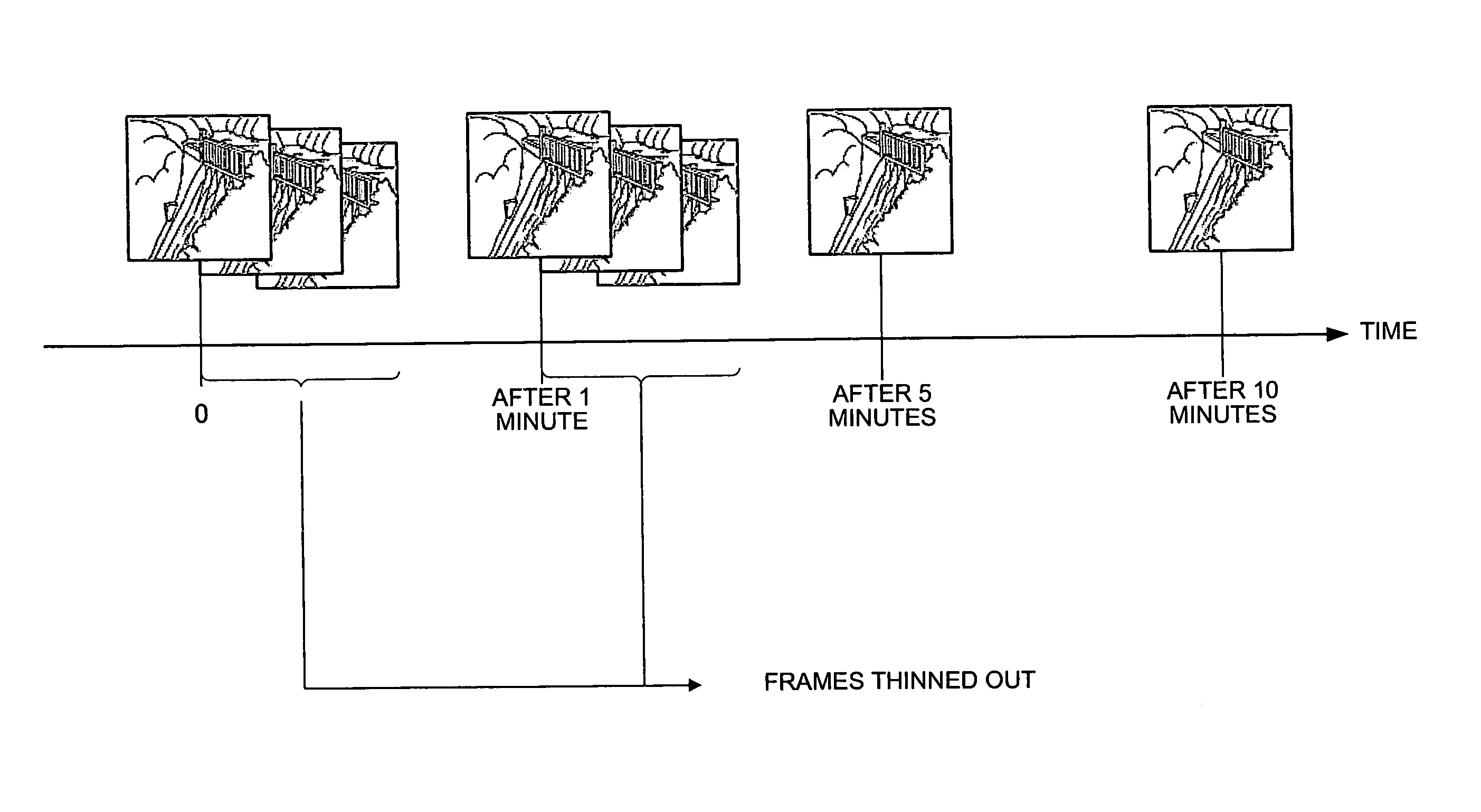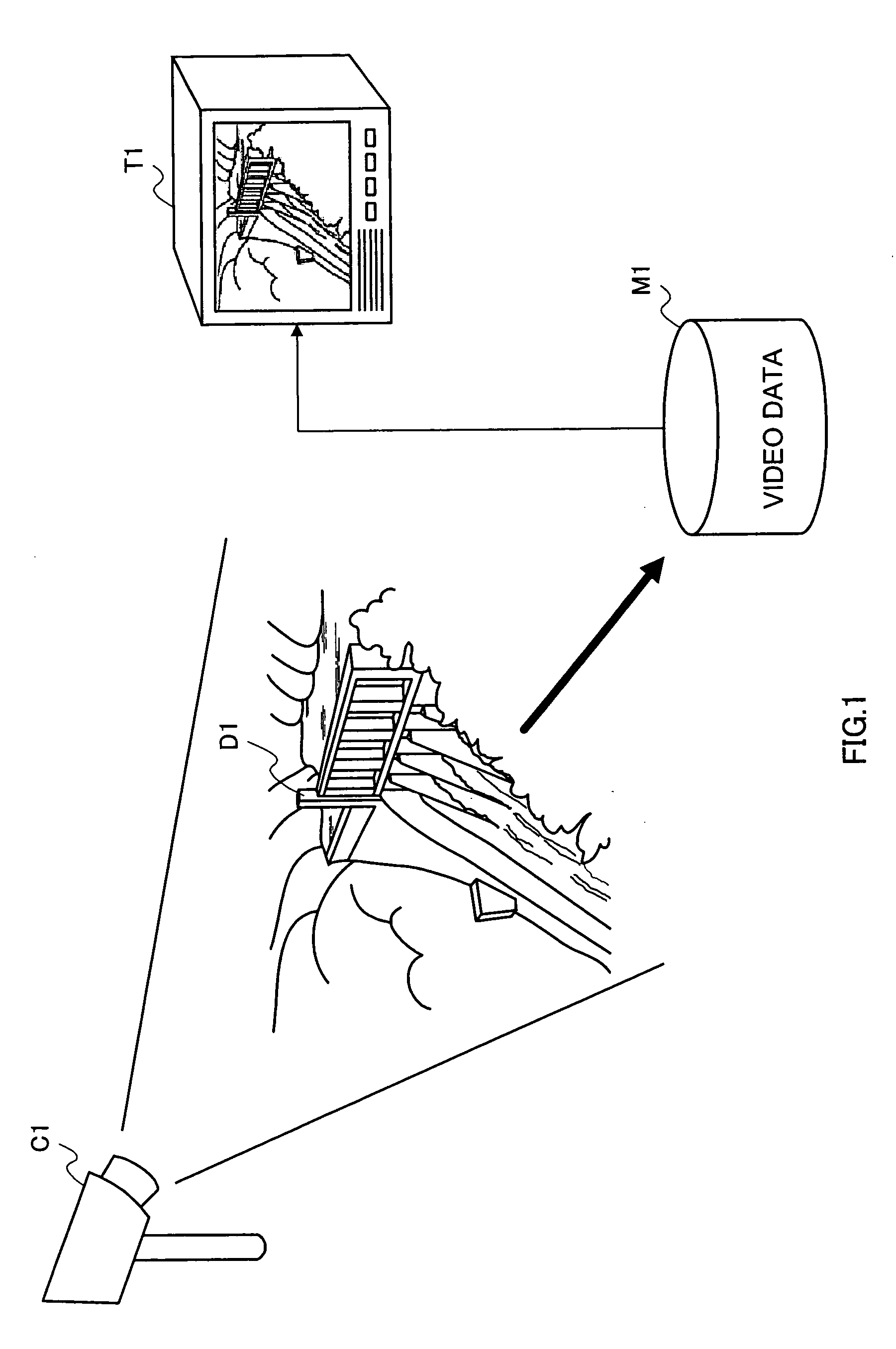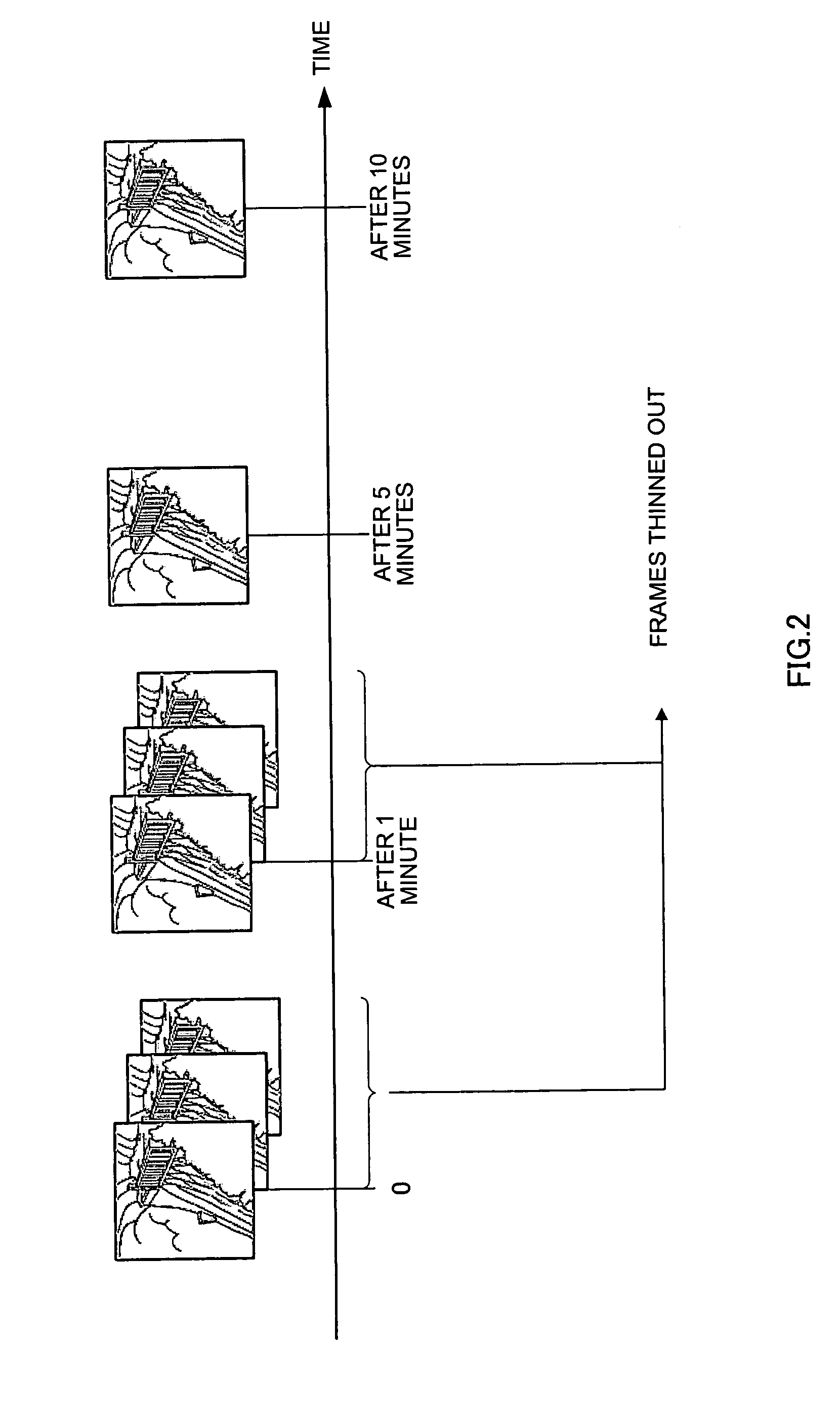Multimedia data recording apparatus, monitor system, and multimedia data recording method
- Summary
- Abstract
- Description
- Claims
- Application Information
AI Technical Summary
Benefits of technology
Problems solved by technology
Method used
Image
Examples
embodiment 1
[0060]FIG. 1 is a drawing for explaining the installation environment of a surveillance system according to Embodiment 1 of the present invention.
[0061] In a surveillance system according to this embodiment, it is assumed that the subject monitored is a dam D1, and one wide-angle camera (surveillance camera C1) is installed and monitors a wide area. Captured video data is stored in a recording medium M1, and is output to and displayed on a display terminal T1 as necessary. Characteristics of the object of surveillance by this system are that there is normally virtually no movement, and if there is movement, it is slow. Objects of surveillance that have similar characteristics include power generation plants, rivers, the open sea, and so forth.
[0062]FIG. 2 is a drawing showing a concrete example of recorded data recorded by means of a surveillance system according to this embodiment.
[0063] As the object of surveillance of this surveillance system is characterized by virtually no m...
embodiment 2
[0116] One method of setting a criterion for determining the importance of data is to focus on the data structure and consider data important to the extent that it is minimal necessary data for showing certain information (such as I picture data in the case of MPEG, for example), as illustrated in Embodiment 1. However, the importance of the content itself of information indicated by data can also be used as a data importance criterion. For example, data recorded before and after the occurrence of an event, or data with a large amount of image variation (=vigorous movement) between frames, can be said to be important data.
[0117] In this embodiment, an object of surveillance is supposed for which there is normally no movement, or for which, if there is movement, scenes in which there is movement and there is no movement can be clearly distinguished. For example, in the case of surveillance of an outdoor installation or surveillance of a building at night, monitoring access to a spec...
embodiment 3
[0123] In this embodiment, the data structure of data management list 104 is made a further subdivided hierarchical structure. That is to say, a “segment” layer is further provided above the layers described in Embodiment 1 and Embodiment 2, and recorded data is recorded within this further subdivided structure.
[0124]FIG. 15 is a drawing showing the data structure of data management list 104.
[0125] In this embodiment, a group of frames recorded in a fixed period is taken as data of one segment, and a level indicating data importance is set on a segment-by-segment basis. The (rank of the) layer stored is decided according to this level. That is to say, when recording, layers are assigned according to importance in segment units, and in data amount reduction, layers of a certain fixed rank or higher are kept, and layers of ranks lower than this level are deleted.
[0126] As the criterion for determining the importance of data, the importance of the content itself of the information i...
PUM
 Login to View More
Login to View More Abstract
Description
Claims
Application Information
 Login to View More
Login to View More - R&D
- Intellectual Property
- Life Sciences
- Materials
- Tech Scout
- Unparalleled Data Quality
- Higher Quality Content
- 60% Fewer Hallucinations
Browse by: Latest US Patents, China's latest patents, Technical Efficacy Thesaurus, Application Domain, Technology Topic, Popular Technical Reports.
© 2025 PatSnap. All rights reserved.Legal|Privacy policy|Modern Slavery Act Transparency Statement|Sitemap|About US| Contact US: help@patsnap.com



